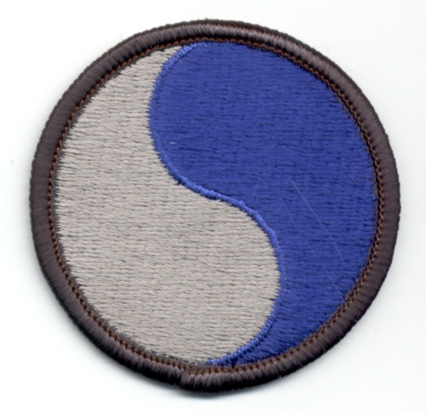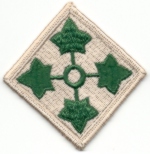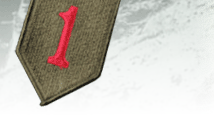Norman L Fleming 29th Infantry Division
 Norman, was the driver of an Artillery-truck in the 29th Infantry Division.. He was originally scheduled to land in the morning on D-day. Due to the slow progression of the beach, Bradley had decided in the morning that no more material was to be send to the beach, before the beachdefenses had been cleared and the passages had been cleared. At 18.00 Norman's truck was finally put on the beach by a landingcraft. Artillery was still landing on the beach. This was the same section of the beach as where Ralph Fancher had landed just before. Norman could drive inland under cover of the naval guns. Norman says that the Navy fired on the bluffs when he drove onto the beach. Norman, was the driver of an Artillery-truck in the 29th Infantry Division.. He was originally scheduled to land in the morning on D-day. Due to the slow progression of the beach, Bradley had decided in the morning that no more material was to be send to the beach, before the beachdefenses had been cleared and the passages had been cleared. At 18.00 Norman's truck was finally put on the beach by a landingcraft. Artillery was still landing on the beach. This was the same section of the beach as where Ralph Fancher had landed just before. Norman could drive inland under cover of the naval guns. Norman says that the Navy fired on the bluffs when he drove onto the beach.
Irving Smolens, 4th Infantry Division, 29th FA Bat. B-Battery
 We had left the English port at Dartmouth on June the fourth, so when it was morning on June 6th we were quite ready to leave the ship on which we had been bobbing around for the last days. The commander of our battalion was Joel F. Thomason. The battalion consisted of three batteries. Each battery was equipped with four M7, armored artillery pieces. There were hundred-and-twenty men to each battery, but for the invasion the personal had been brought back to half strength. Sixty men per battery went with the four pieces from the transport onto an LCA. The pieces were places in firing position on the decks of the LCA's. Two in the front and two in the back. This way they added to the fire-power of the naval guns, and fire high trajectory fire on the beach when the first waves of the eight regiment of the Ivy Leaf set foot on Utah Beach. I was with the half of B-battery that stayed behind in reserve on the Transports. The other half went in on the second or third wave. The three batteries had orders to take in firing positions on the beach. The LCA that carried B-battery hit a mine while on its way to the beach and the landingcraft sank, drowning forty of the sixty men directly. We had left the English port at Dartmouth on June the fourth, so when it was morning on June 6th we were quite ready to leave the ship on which we had been bobbing around for the last days. The commander of our battalion was Joel F. Thomason. The battalion consisted of three batteries. Each battery was equipped with four M7, armored artillery pieces. There were hundred-and-twenty men to each battery, but for the invasion the personal had been brought back to half strength. Sixty men per battery went with the four pieces from the transport onto an LCA. The pieces were places in firing position on the decks of the LCA's. Two in the front and two in the back. This way they added to the fire-power of the naval guns, and fire high trajectory fire on the beach when the first waves of the eight regiment of the Ivy Leaf set foot on Utah Beach. I was with the half of B-battery that stayed behind in reserve on the Transports. The other half went in on the second or third wave. The three batteries had orders to take in firing positions on the beach. The LCA that carried B-battery hit a mine while on its way to the beach and the landingcraft sank, drowning forty of the sixty men directly.
Twenty men had not instantly been killed and could be dragged out of the water by the
crews of passing ships. These men were all seriously injured and non of them saw and
only a few of them returned to their unit after months of hospitalization. I landed later in the day and we were reassigned for other duties, because our guns had gone down with the LCA. I became a message-runner between the different command posts of the battalion. The 29th Field Artillery Battalion was on Utah Beach probably the battalion with the most casualties on D-day.
<< BACK
|

 Norman, was the driver of an Artillery-truck in the 29th Infantry Division.. He was originally scheduled to land in the morning on D-day. Due to the slow progression of the beach, Bradley had decided in the morning that no more material was to be send to the beach, before the beachdefenses had been cleared and the passages had been cleared. At 18.00 Norman's truck was finally put on the beach by a landingcraft. Artillery was still landing on the beach. This was the same section of the beach as where Ralph Fancher had landed just before. Norman could drive inland under cover of the naval guns. Norman says that the Navy fired on the bluffs when he drove onto the beach.
Norman, was the driver of an Artillery-truck in the 29th Infantry Division.. He was originally scheduled to land in the morning on D-day. Due to the slow progression of the beach, Bradley had decided in the morning that no more material was to be send to the beach, before the beachdefenses had been cleared and the passages had been cleared. At 18.00 Norman's truck was finally put on the beach by a landingcraft. Artillery was still landing on the beach. This was the same section of the beach as where Ralph Fancher had landed just before. Norman could drive inland under cover of the naval guns. Norman says that the Navy fired on the bluffs when he drove onto the beach.
 We had left the English port at Dartmouth on June the fourth, so when it was morning on June 6th we were quite ready to leave the ship on which we had been bobbing around for the last days. The commander of our battalion was Joel F. Thomason. The battalion consisted of three batteries. Each battery was equipped with four M7, armored artillery pieces. There were hundred-and-twenty men to each battery, but for the invasion the personal had been brought back to half strength. Sixty men per battery went with the four pieces from the transport onto an LCA. The pieces were places in firing position on the decks of the LCA's. Two in the front and two in the back. This way they added to the fire-power of the naval guns, and fire high trajectory fire on the beach when the first waves of the eight regiment of the Ivy Leaf set foot on Utah Beach. I was with the half of B-battery that stayed behind in reserve on the Transports. The other half went in on the second or third wave. The three batteries had orders to take in firing positions on the beach. The LCA that carried B-battery hit a mine while on its way to the beach and the landingcraft sank, drowning forty of the sixty men directly.
We had left the English port at Dartmouth on June the fourth, so when it was morning on June 6th we were quite ready to leave the ship on which we had been bobbing around for the last days. The commander of our battalion was Joel F. Thomason. The battalion consisted of three batteries. Each battery was equipped with four M7, armored artillery pieces. There were hundred-and-twenty men to each battery, but for the invasion the personal had been brought back to half strength. Sixty men per battery went with the four pieces from the transport onto an LCA. The pieces were places in firing position on the decks of the LCA's. Two in the front and two in the back. This way they added to the fire-power of the naval guns, and fire high trajectory fire on the beach when the first waves of the eight regiment of the Ivy Leaf set foot on Utah Beach. I was with the half of B-battery that stayed behind in reserve on the Transports. The other half went in on the second or third wave. The three batteries had orders to take in firing positions on the beach. The LCA that carried B-battery hit a mine while on its way to the beach and the landingcraft sank, drowning forty of the sixty men directly.